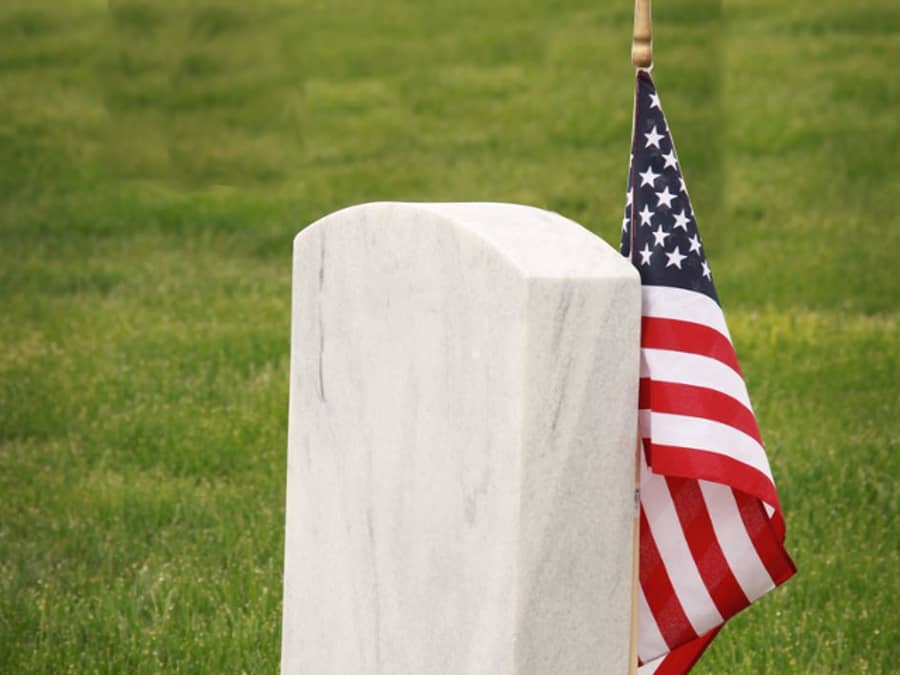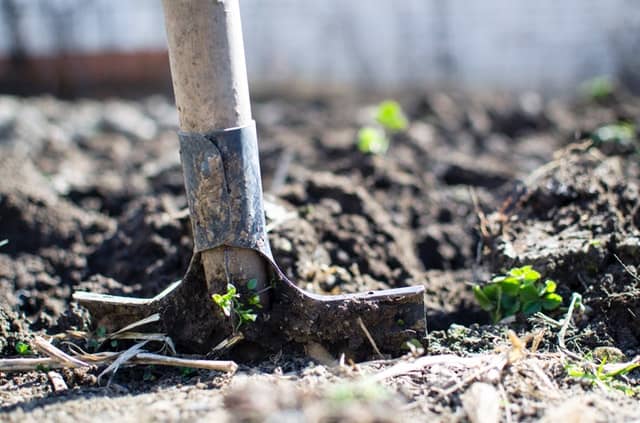For most of us burying our relative on our own land seems fanciful or even possibly illegal, but it’s something I’ve been pondering for a while and I think the answer may be different to what we all first thought.
I remember some time ago watching a film, (I can’t recall the name of it) and in this film, the supporting characters were holding a funeral at their home.
Later on in the film, the characters were showing the lead character around the family plot where generations of their family had been buried. Recalling this film, made me wonder if this is still a valid option in the modern regulated world. I began to wonder if one can actually bury a loved-one on private property in the USA?
The simple answer is “Yes! Yes, you can. But it depends.” “Depends on what?” You might ask.
Depending on which state you live in, you can bury loved ones on your own property. Most states do not have any laws prohibiting this practice but do have some zoning laws to consider, while others have the option of applying for the right. Washington is the sole state where this is not an option.
Although it seems that the way is open for a private burial plot on your land, there are many things to consider before you start digging up your garden. So, if this is something you are seriously considering, please carry on reading.

What does your state say?
The list of allowed states is long, so let’s start with the list of states that require special permits. I was actually surprised that this list of states was so short, but they do call America the land of the Free for a reason.
If you live in the states of Arkansas, California, Indiana, or Louisiana (A.C.I.L.) you will have a bit more paperwork before you can select this option. Remember, however, there is also the possibility that your application for a permit to bury on your land will be rejected.
A.C.I.L. all require that you establish a “home cemetery” and that your home is in a “rural” area. This might seem obvious and I would suspect that few people that live in downtown Little Rock, in a high rise apartment building, would be applying for a permit for home burial, but the line becomes much greyer when you consider the suburbs.
Where does the line between the suburbs and the rural lay? This is a matter of zoning. You might want to check your zoning before you decide to dive into the steps of applying for a permit.
The odd state out
As mentioned above, Washington is the lone wolf, the oddball out. It is the only state where there simply is no option for home burial, that is unless you live at a cemetery. They require that all burials happen on land run by cemetery corporations. Chapter 68.20 of the Revised Code of Washington lays out all the laws regarding this issue.
Home burial in all other states

How about if you don’t live in any of the five states mentioned above? I considered listing all the other states here but decided that it would be quite mundane to read, so instead, I will only refer to the instances where there are differences from the majority in this group.
All these states actually don’t have established laws, at the time of this writing, regarding the permission for home burials. Nolo.com was my main source of research for this article and didn’t say much about the states that have no laws other than that they didn’t have laws, and that it would “most likely” be ok if you lived in rural areas. This again echos the idea for the A.C.I.L mentioned above and that checking zoning would be a good idea.
Alabama, Connecticut, Illinois, Louisiana, Michigan, Nebraska, New Jersey, New York, are among the states that don’t have laws restricting home burials, but they do have specific regulations for the hiring of a funeral director.
Indiana, which requires a permit, also requires that a funeral director be hired. So let’s take a look at what a funeral director does.
Funeral Directors
Undertakers and morticians are common aliases for the funeral director and they generally refer to the same person. Usually, they are experts in helping the family plan funeral arrangements. They know the laws, procedures, and techniques, that are connected to funerals.
Some of the duties of funeral directors might include:
- helping families plan services
- helping families play wakes and memorial services
- placing obituary notices in newspapers
- dealing with crematoriums
- handling legal paperwork such as death certificates
Each state has different regulations regarding death certificates. On average you are required to apply for and obtain a death certificate within 5 days of the death. However, some states require it as soon as 3 days after and some grant the leeway of 10 days. There are many things to consider in this process.
For example, in Arkansas, the deceased person’s doctor, a medical examiner, or another approved medical provider must complete the medical certification which contains the date, time, and cause of death within two business days. This medical certificate must be taken to the local registrar or health department to initiate the death certificate process.
Certified copies of the death certificate are required to carry out many of the other tasks after the death, such as arranging for the disposition of the body and transferring the deceased person’s property to inheritors.
These procedures differ from state to state in small ways in some states and in large ways in others.
Another bit of expertise a funeral director can bring is the state by state regulation as to the dimensions of a grave. Although, the usually adage of “burying them 6 feet under” still holds true, it’s less known that most graves have a length of 8 feet and a width of about 36 inches.
In most states there are also no regulations on what type of casket. You may know the old pine box adage, but there are actually several other avenues to explore including a more ecologically friendly direction. Check out my article on casketless funerals and green alternatives here. Nevertheless, a funeral director would certainly be able to advise you on this.
Considering this, it might be a good idea to consider hiring a funeral director even if the state does not require you to do so. Who wants the added stress of having a death certificate application rejected because you forgot to check a box on an application form, especially during the already high-stress time of the death of a loved one.
Additionally, most funeral directors are skilled at preserving and preparing the body for the funeral, and many are practicing embalmers. There are several states that have specific laws regarding embalming.
Embalming

Embalming is rarely required, and dry ice, or refrigeration as some usual alternatives. Laws usually do stipulate that if the body is not buried (or disposed of) in a timely manner that one of these options must be used. The time frame varies but is usually within 24-48 hours. That being said, there are a few instances where there is no choice and embalming is the only option.
Alabama requires embalming if the body is to cross state lines, as do many other states when the body is transported via public transportation, such as a plane or a train. Many other states also consider these forms of transportation as a requirement for embalming.
In Connecticut, the embalmer is a required hire if the deceased died of a contagious disease, where some other states, like Michigan, specify the actual diseases, such as diphtheria, meningococcal infections, plague, polio, scarlet fever, or smallpox. Most states just suggest you consult a doctor in the cases where the deceased passed from a contagious disease.
Kansas adds the intention of placing the body in a mausoleum as a requirement for embalming. Minnesota adds the stipulation that if the body is to be view by anyone other than family members.
Benefits of Embalming
If the state doesn’t require it, why would we consider the costly procedure that is embalming in the first place? There are some benefits that make this service a valid consideration.
First of all, like refrigeration, it delays the natural process of body decomposition and allows for delayed final disposition. Thus offering the family more time for the planning and preparation of the funeral.
Secondly, it allows for additional time for family members and friends to travel and gather together. This is particularly relevant in cases where the family is spread across the nation.
When everyone is gathered, embalming allows for additional time to view and hold ceremonies with the body present such as allowing for each person to have individual time with the deceased to say their final goodbyes.
Embalming can also allow additional time for reconstructive procedures, that might grant the grieving family and friend the luxury of viewing a more recognizable person.
Generally speaking, embalming grants the family more time with the deceased.
In addition, it grants more opportunities for open caskets viewing than refrigeration as many funeral homes don’t have refrigeration facilities on-site and then must contract this service out to hospitals. This causes the body to be transported more often.
This all considered both refrigeration and embalming are not required and if you wish to have your loved one “untouched” and buried at your home, you most likely have the option.
Transportation
As mentioned above, transportation is a consideration when we are decided if we want, or have, to consider embalming. However, there is, in most cases, a need for at least some transportation to the funeral ceremony and to the burial site from the funeral ceremony.
In most cases, a death certificate is a must just to apply for a permit to transport the body. As mentioned above, there might be a requirement of embalming if you are shipping the body across state lines. The usual modes for this service are plane or train, but these can get pricey. My research yielded a range of $1,500 to $6,000 and upwards of $15,000 (for international services).
Local transportation is usually done via automobiles by hiring a hearse from a funeral home. Although there are no specific licensing requirements for hearse drivers. I doubt a hearse owner is going to rent you his hearse without a special favor. But there isn’t much option here. Can the use of a van be justified? Only you can answer that question.
Transportation can be costly and intricate but it is also possible to reduce this burden by electing cremation.
Cremation
In most states, cremation is an option. “But we wanted to bury our loved one.” I hear you say! Burial of an urn at home on private property is not only legally acceptable, but it is also a common practice. (check out the affordable selection on OneWorld Memorials).
One thing to keep in mind is that some crematoriums will only deal with a funeral director.
There are two main types of cremation, flame-based cremation, and alkaline hydrolysis. Let’s talk a bit about the differences.
Flame-based cremation is the type that most people think of when they hear about the option of cremation.
It is the more common and widely available of the two. In the simplest terms, fire and heat are used, in a closed environment to reduce remains to ash and bones. This reduction process generally takes about 2 hours but will differ based on weight and body shape, as well as by heat.
After the heat procedures are complete, the bones are collected and ground down to dust to produce the remains. This is then usually added to an urn or stored until an urn is selected.
Alkaline hydrolysis is a liquid type cremation where the body is reduced to bone fragments through the use of a mixture of 95% water and 5% dissolving liquids.
Heat is also used to speed up the process, as is pressure, and/or agitation. Although this procedure is only legal in 22 states in the USA (at the time of this writing) is it still a valid consideration. There are a few benefits that make is stand out against the traditional flame-based type.
First of all, some people see it as a gentler process when compared to the flame-based method. Secondly, this process is seen as more environmentally friendly as it uses significantly less fuel and produces less carbon than both traditional cremation and burial.
Juxtaposed with flamed-based cremation Alkaline’s waste is released into the water treatment system with minimal effect, where flame-based cremation released its waste directly into the air. Both are considered safe, and it’s your choice which you would prefer.
Lastly, this process leaves about 30% more of the original body behind granting the family a larger portion of their loved one. However, it usually requires urns of a slightly larger size.
Where is falls short of flame-based cremation is in the time it takes. In most cases, it takes twice as long, with the process taking anywhere from three to sixteen hours.
Bringing Remains Home
The discussion above regarding cremation is linked to home burials in several ways. It can sometimes make transportation (home) cheaper and less bureaucratic.
It can sometimes avoid the need for embalming for families that wish to avoid that option. But mainly, it makes bringing your loved one home, to stay, simple and legal in all instances. Unless you have a long-standing family tradition of home burials, in which case, you probably didn’t need to read this article at all, you might be wise to at least consider cremation as an option.
Where to locate your loved one’s grave?

Whether you are planning to burial your loved one in a conventional grave or to later place an urn containing their ashes, the location is key. Assuming that you don’t already have an established family cemetery on your land, it’s essential that you consider both the present and the future.
Digging the grave
As I have mentioned before, a conventional grave has to be at least 6 feet deep and this would involve a lot of digging if done by hand. Of course, there is something extremely symbolic and respectful in doing this yourself, however, it’s not always possible.
Today modern sextons (if they even dig the graves themselves) employ mechanical diggers to prepare graves. So, you should consider the site in terms of ease of access for any machines you may need to dig the grave.
Siting the grave
Again, if you already have an established cemetary on your land, this isn’t an issue for you. If you haven’t, then thinking about the actual land you want to commit your loved one’s body to is quite important.
Ideally, you should site the grave in a place that won’t be easily trodden over by both humans and animals. Building a gated areas is an ideal way to avoid unintentional intrusions into your graveyard.
Also, consider the future maintenance of the graveside. Having the grave in a grassed area will make it much easier to keep it tidy and a place you will want to visit on a regular basis.
Another thing to consider is the drainage of the land. Although it may not seem to be a high priority for the deceased, having a flooded grave can allow a headstone to shift and even contaminate the local area. So, high or well-drained land is an ideal spot to site a grave.
Future development
Although perhaps not the biggest concern during your time of grieving, the future changes the land surrounding the grave will face should be considered. Although home burials have to be in rural areas in the states, research if that part of your land is likely to become an asset for you in the future. There would be nothing worse than seeing land very close to the grave being developed with or without your consent.
In Closing
In this article, we took a look at some of the different states and the regulations that they have against home burial. If your particular state was omitted from mention, you can run a search of NOLO.com for (state name) Home Funeral Laws to find specific laws regarding your state.
Living in America grants mourners many options for how they wish to handle the situation of what to do with passed loved ones. It’s never an easy choice and the more options there are, the harder it might be to choose, but having those options can at least grant people some comfort and convenience.





